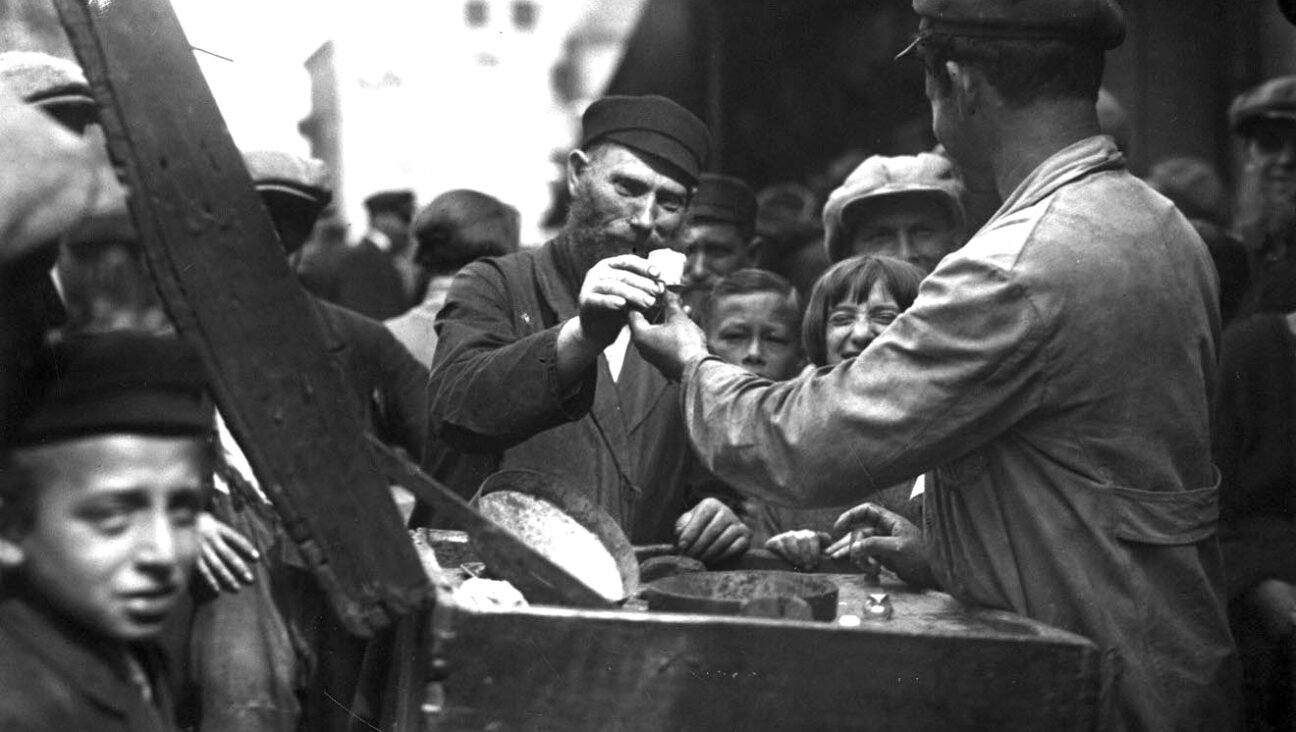Lithuania vs. Morocco — Whose Jewish Museum Wins?

Graphic by Angelie Zaslavsky
Model of a Rabat Jewish bride in her finery / Jewish Museum in Casablanca
I was fortunate enough to travel this month to both Morocco and Lithuania — the former for a class trip, the latter for an attempt to become acquainted with the land of my ancestors, including my ancestral hometown of Panevėžys (Ponevezh). While in each country, I decided to visit the national Jewish museum.
In some ways, the Jewish museums are very different. Morocco’s Jewish Museum is located in a posh suburb of Casablanca, and is fairly small. Lithuania’s Jewish Museum — the “Vilna Gaon Jewish State Museum” — is a somewhat larger affair, spread across three facilities in Vilnius pending the completion of a new structure in 2017. Morocco’s is discreetly signposted; Vilnius’ is prominently marked with enormous direction signs on relevant city streets.

Artifacts exhibited at the Tolerance Centre, a part of the Vilna Gaon Jewish State Museum.
Yet both are state-funded museums, founded in the 1990s during times of change. The Lithuania museum emerged in a post-Soviet state coming to terms with its unsavory past of historical anti-Semitic nationalism and collaboration with the Nazis. The Morocco museum’s founding was one consequence of a wider liberalization following the infamous Years of Lead, which included both political liberalization and the discussion of taboo topics, like the history and culture of Morocco’s Jewish and Berber-speaking communities. Both institutions have been generously funded by donors abroad. Both are part of growing Jewish tourism industries.
In some ways, the museums’ exhibits are remarkably similar: there are the mezuzot, Torah crowns and ornate arks of historical communities. There are the pictures of old communities and art made by today’s community members. Both museums have a curious interest in strange Torah ornaments. But for me, one remarkable difference set these two museums apart.
Lithuania’s museum wants to tell stories. Morocco’s wants to convey situations.
What does this mean? The exhibits are set up fundamentally differently. Lithuania’s exhibits are set up in a series of well-presented narratives. There’s the exhibit of the “lost Litvak world” telling the stories of Lithuanian Jewish folk art, an exhibit on children’s experiences of the Holocaust, and an exhibit telling the story of Lithuanian Jewry from 700 AD until today. The entire Holocaust Memorial is set up as a story, and small exhibits are placed among large, illustrated narratives. You enter and leave each exhibit with the same feeling you get after finishing a book: you’ve just finished reading a story. The effect is visceral: though I myself know the story of my grandmother’s experience in the Shoah well, even I was overwhelmed before long. And that’s the point.
Morocco’s exhibits have far less text. Instead, they’re presented as a series of situations. An old Jewish jewelry shop from Fez’s historic mellah is beautifully reconstructed, as are the bridal costumes of the different Jewish communities of Morocco. A bimah, circumcision chairs, and living room furniture have all been left “as is” for the viewer to examine and admirer. Then there’s the exhibition of photographs of restored and unrestored synagogues across the country — from Taroudant in the south to Tangier in the north — illustrating the rich heritage of spaces of worship found across Jewish Morocco. You’re not told a story. Instead, you leave with tastes — or vignettes — of Moroccan Jewish life “as it was.”
Why this difference? Some of it has to do with politics. Lithuania’s democratic record is better than Morocco’s, so discussions on minority histories are neither as fraught nor as guarded in Lithuania. Some of it has to do with history — 95% of Lithuania’s Jews were killed in the Holocaust, and the story of the Shoah remains hugely central in Lithuanian Jewish history. Morocco’s exodus is far more complex — and, given the political situation, still taboo in a way the Holocaust is no longer verboten in Lithuania.
A bimah at the Jewish Museum in Casablanca / Jonathan Katz
Some of it also has to do with money: Lithuania’s museum has been far more generously supported by donors from abroad, allowing the creation of expensive exhibits. Though Moroccan Jews abroad maintain rich ties to Morocco and have charitable frameworks of their own, I suspect Ashkenormativity is a significant reason why Morocco’s museum is not nearly as generously supported by foreign donors. Even given the huge size differential between the museums, this difference stood out as I read the donor boards at each place.
Yet fundamentally I think there’s also something to be said about how each museum’s curators want the stories to be told. Lithuania’s museum seemed attached to single stories — from then to now, from a huge presence in the country to the tiny community today. Much of it seems to be looking into the past, as perhaps is appropriate. Morocco’s museum seems to give more a sense of present and future: the entire exhibit is framed by the article of the Constitution acknowledging the role of “Hebraic elements” in Morocco’s cultural foundation. In a sense, then, the museum is not about a story, but about what could have been or what could be.
I personally preferred the museum in Vilnius: though it was emotionally tough, there was something powerful and important about seeing Jewish stories narrated for a wider audience. But if you find yourself in Casablanca, don’t let its small museum’s relative lack of narrative turn you off. Both museums are very worth visiting, for very different reasons.















